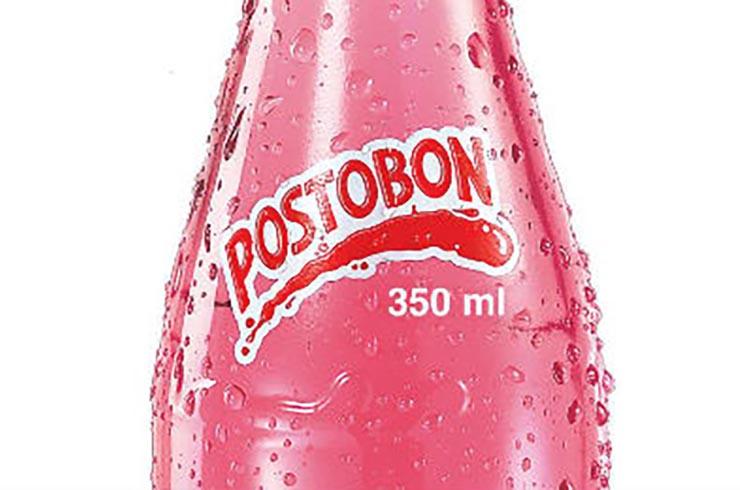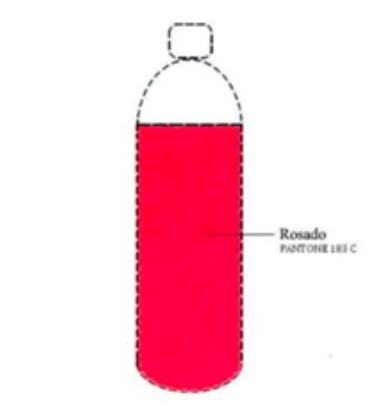
Relevant Articles of Decision 486
Article 134 of Decision 486 states that a trademark is:
- Any sign capable of distinguishing products or services in the market.
- A sign capable of graphic representation.
- Likewise, the following may constitute trademarks: e) a color defined by a specific shape, or a combination of colors.
On the other hand, Article 135 of Decision 486 states that the following signs cannot be registered as trademarks:
- Those lacking distinctiveness or not susceptible of graphic representation according to the first paragraph of article 134.
- b) Those lacking distinctiveness.
- h) Those consisting of a color considered in isolation, without being defined by a specific shape.
The POSTOBON Case
On August 27, 2009, POSTOBON S.A. applied before the Superintendence of Industry and Commerce (SIC) of Colombia for the registration of the PINK color trademark (PANTONE 183C) to distinguish products within class 32: Mineral waters and carbonated beverages, and other non-alcoholic beverages; apple-flavored.

ACAVA LIMITED filed an opposition based on articles 135(b), 135(c), and 135(h) of Decision 486, stating:
- The sign lacks distinctiveness.
- The shape of the container is conventional.
- The PANTONE 183C pink element is typical for distinguishing apple-flavored sodas in the market.
POSTOBON S.A. responded, stating:
- They do not claim the shape of the container, only the PINK color (PANTONE 183C).
- The shape is used in a referential manner to avoid falling under the prohibition of article 135(h).
- The PINK color (PANTONE 183C) was adopted as a trademark to distinguish apple-flavored soda, as there is no association between this color and the fruit, making it distinctive.
- The PINK color (PANTONE 183C) has acquired sufficient distinctiveness to be registered as a trademark since its launch in 1954.
- Market research evidence shows the association and recall that consumers have with the PINK color (PANTONE 183C) and the company.
The first instance[1] stated that the claimed tone PINK PANTONE (183C) individualizes a product and that the container shape is not claimable and serves to present the color. Furthermore, the PINK PANTONE (183C) color is not a characteristic imposed on the nature of apple beverages, and being a color delimited by a shape, it cannot be considered an isolated color.
ACAVA LIMITED filed an appeal, arguing that such color cannot be eligible for registration because it is a characteristic tone used in the market for distinguishing apple-flavored sodas, which would restrict competition.
The second instance[2] stated that for a color to be protected as a trademark, it must be delimited by a specific form. The norm does not condition the shape that must delimit the color. Assuming that the shape must be distinctive would generate an additional requirement not demanded by the norm. However, the overall trademark (color + shape) must be distinctive.
The prohibition of article 135(h) has an exception: the sign has acquired distinctiveness through constant use in the Member Country. Therefore, a color can constitute a trademark if it is delimited by a form or if it is considered in isolation, provided that it has acquired distinctiveness and is not subject to any of the grounds for refusal set forth in article 136, Decision 486.
On the other hand, anything that is not necessary for information or is not natural or essential to the product or service is available to be appropriated as a trademark. In the particular case of PINK PANTONE (183C), distinctiveness is associated with it not being a descriptive, generic, or usual color for apple-flavored sodas[3].
ACAVA LIMITED filed a Non-Compliance Action lawsuit on January 11, 2017, as Colombia, through the SIC, would not be complying with applying articles 134 and 135, literals a), b), and h) of Decision 486.
Process 01-AI-2017 published on June 4, 2019
The Court of Justice of the Andean Community (TJCA) stated that a non-traditional trademark can obtain protection not only based on acquired distinctiveness but also with ab initio distinctiveness[4]. Likewise, the prohibition of literal h) of Article 135 of Decision 486 refers to the seven fundamental colors of the rainbow[5]. Regarding the requirement of form, the Court pointed out that demanding the form that delimits the color to be distinctive would imply a requirement not contemplated in the Andean regulations, which would distort the essence of the color trademark[6].
Therefore, the legal criterion applied by the Colombian Superintendence of Industry and Commerce (SIC) is in accordance with the Andean regulations[7] and also adopts the authentic interpretation of the norm made by the TJCA[8].
Dissenting vote of Magistrate Hugo R. Gómez Apac
Magistrate Hugo R. Gómez Apac pointed out that Article 134 literal e) should be understood to mean that both the color and the shape together must be distinctive, so this last element cannot be disregarded, as can be concluded from the Ground 4.5 of the Prejudicial Interpretation 232-IP-2016 of May 11, 2018[9]:
“It is possible to register an isolated color as a trademark if it is delimited by a specific form and, in addition, seen as a whole, and without incurring in another ground for refusal, it enjoys distinctiveness.”
As the abstract legal criterion of the SIC of Colombia is based on the registration of a color as distinctive without considering the form, it contradicts the abstract legal criterion of the TJCA, which implies a breach of the Andean norm by Colombia. (…) The legal criterion of the defendant, by disregarding the form, is essentially supporting the registration of an isolated color without acquired distinctiveness, which blatantly violates Decision 486. If there is no acquired distinctiveness and the form is disregarded, an isolated color would be registered to the detriment of other competitors[10].
Therefore, as stated by Magistrate Gomez, for a color to be registered as a trademark, there are three scenarios:
- It involves a combination of colors, in which only the color must be distinctive since the norm does not require it to be delimited by a form, in accordance with Article 134 literal e) of Decision 486.
- It involves a color delimited by a specific form, and seen as a whole, they must enjoy distinctiveness in accordance with Article 134 literal e) and Article 135 literal h) of Decision 486.
- It involves an isolated color, without being delimited by a specific form, but due to its constant use in the corresponding member country, it has acquired distinctiveness regarding the products or services to which it applies[11].
The Takeaways
Notwithstanding we agree with the criteria presented by Magistrate Gómez, we hereby outline the requirements for a color trademark to be eligible for registration according to the interpretation issued by the TJCA:
- A color trademark can be registered as long as it is distinctive, delimited by a specific form, and not subject to absolute prohibitions of registration.
- A color trademark must be delimited by a specific form; however, the form does not need to be a distinctive element. Nevertheless, as a whole, it must be distinctive.
- A color trademark can be registered without a specific form to delimit it, provided that distinctiveness has been acquired.
[1] Resolution No. 33206 dated May 27th, 2014.
[2] Resolution No. 1075 dated January 19th, 2015.
[3] The evidence in the record shows that a large percentage of the surveyed individuals (77%) associate the color pink ROSADO PANTONE (183C) with Manzana Postobón soda. However, such evidence was not analyzed from the perspective of secondary meaning.
[4] Legal ground 132
[5] Legal ground 137
[6] Legal ground 140
[7] Legal ground 142
[8] Process 111-IP-2009
[9] It is important to highlight that through Prejudicial Interpretation Process 120-IP-2021, which constitutes an interpretive legal criterion and an act of clarification, the aforementioned legal ground issued by the TJCA is reaffirmed.
[10] Last paragraph of legal ground 4.23 of Magistrate Gomez’s dissenting vote.
[11] Legal ground 4.19 of Magistrate Gomez´s dissenting vote.
